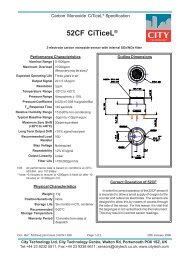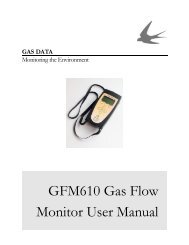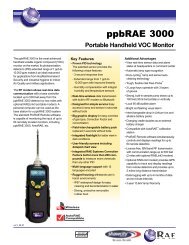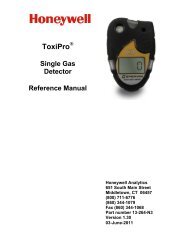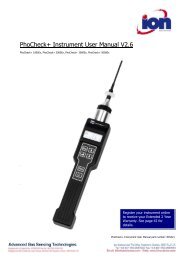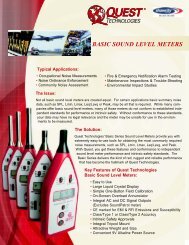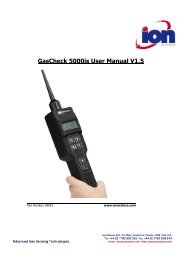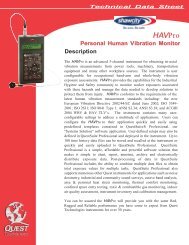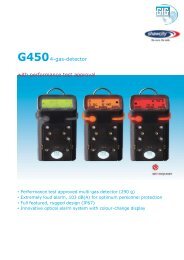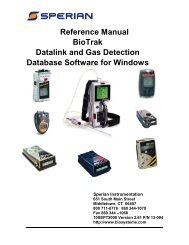Xgard Type 1 - Shawcity Limited
Xgard Type 1 - Shawcity Limited
Xgard Type 1 - Shawcity Limited
Create successful ePaper yourself
Turn your PDF publications into a flip-book with our unique Google optimized e-Paper software.
2. Installation <strong>Xgard</strong><br />
English<br />
2.2 Mounting<br />
<strong>Xgard</strong> should be installed at the designated location with the sensor pointing down. This<br />
ensures that dust or water will not collect on the sensor and stop gas entering the cell. The<br />
mounting detail is shown in Diagram 2 (see page 2).<br />
2.3 Cabling requirement<br />
Cabling to <strong>Xgard</strong> must be in accordance with the recognised standards of the appropriate<br />
authority in the country concerned and meet the electrical requirements of the detector.<br />
Crowcon recommend the use of 2-core screened cable with a minimum cross-sectional<br />
area of 0.5 mm 2 (20awg). Suitable weatherproof cable glands must be used. Intrinsically<br />
Safe cables should be identified by some means, for example coloured blue. Alternative<br />
cabling techniques such as steel conduit may be acceptable provided appropriate standards<br />
are met.<br />
<strong>Xgard</strong> requires a dc supply of 8-30 V and is loop powered (if mounted in a hazardous<br />
area, do not apply a voltage higher than the maximum rating of the Zener barrier, typically<br />
28 V). Ensure there is a minimum of 8 V at the detector, taking into account the voltage<br />
drop due to cable resistance, the Zener barrier (if fitted) and the sense resistance of the<br />
control panel to which it is connected.<br />
For example, a nominal dc supply at the control panel of 24 V has a guaranteed minimum<br />
supply of 19.5 V. The circuit may demand up to 20 mA. Given a sense resistor in the<br />
control panel of 232 Ohms the maximum voltage drop allowed due to cable resistance is<br />
6.8 V. The maximum loop resistance allowed is 340 Ohms (approx.).<br />
A 1.5 mm 2 cable will typically allow cable runs up to 14 km. Table 1 below shows the<br />
maximum cable distances given typical cable parameters<br />
C.S.A.<br />
Resistance (Ohms<br />
per km)<br />
Max. Distance<br />
Max. Distance<br />
with 330 Ω Zener<br />
barrier<br />
mm 2 Awg Cable Loop (km) km<br />
1.0 17 18.1 36.2 2.2 0.35<br />
1.5 15 12.1 24.2 3.3 0.5<br />
2.5 13 7.4 14.8 5.4 0.85<br />
Table 1: Maximum cable distances for typical cables<br />
The acceptable cross sectional area of cable used is 0.5 to 2.5 mm 2 (20 to 13awg). The<br />
table is provided for guidance only, actual cable parameters for each application<br />
should be used to calculate maximum cable distances.<br />
10



